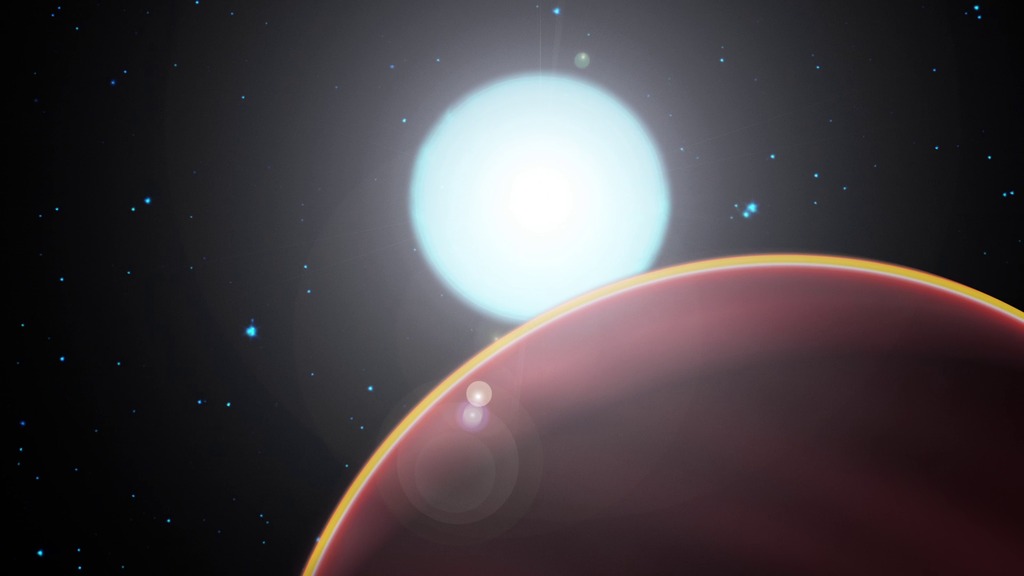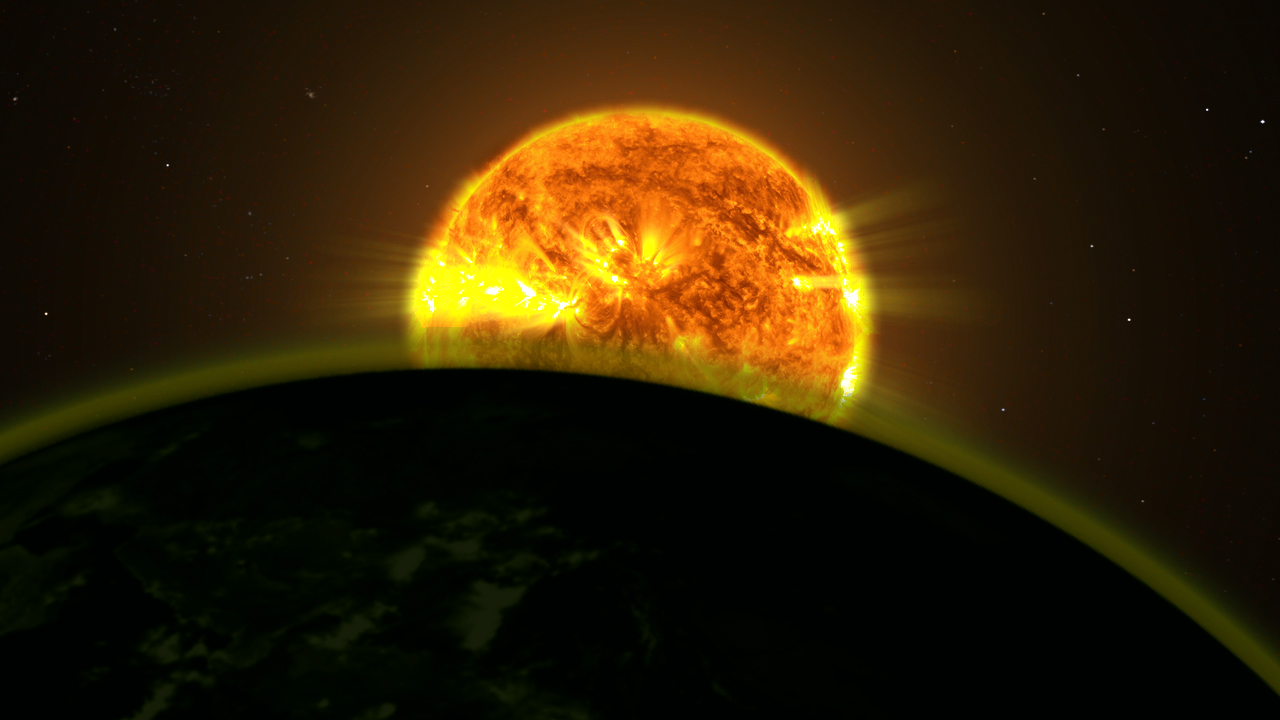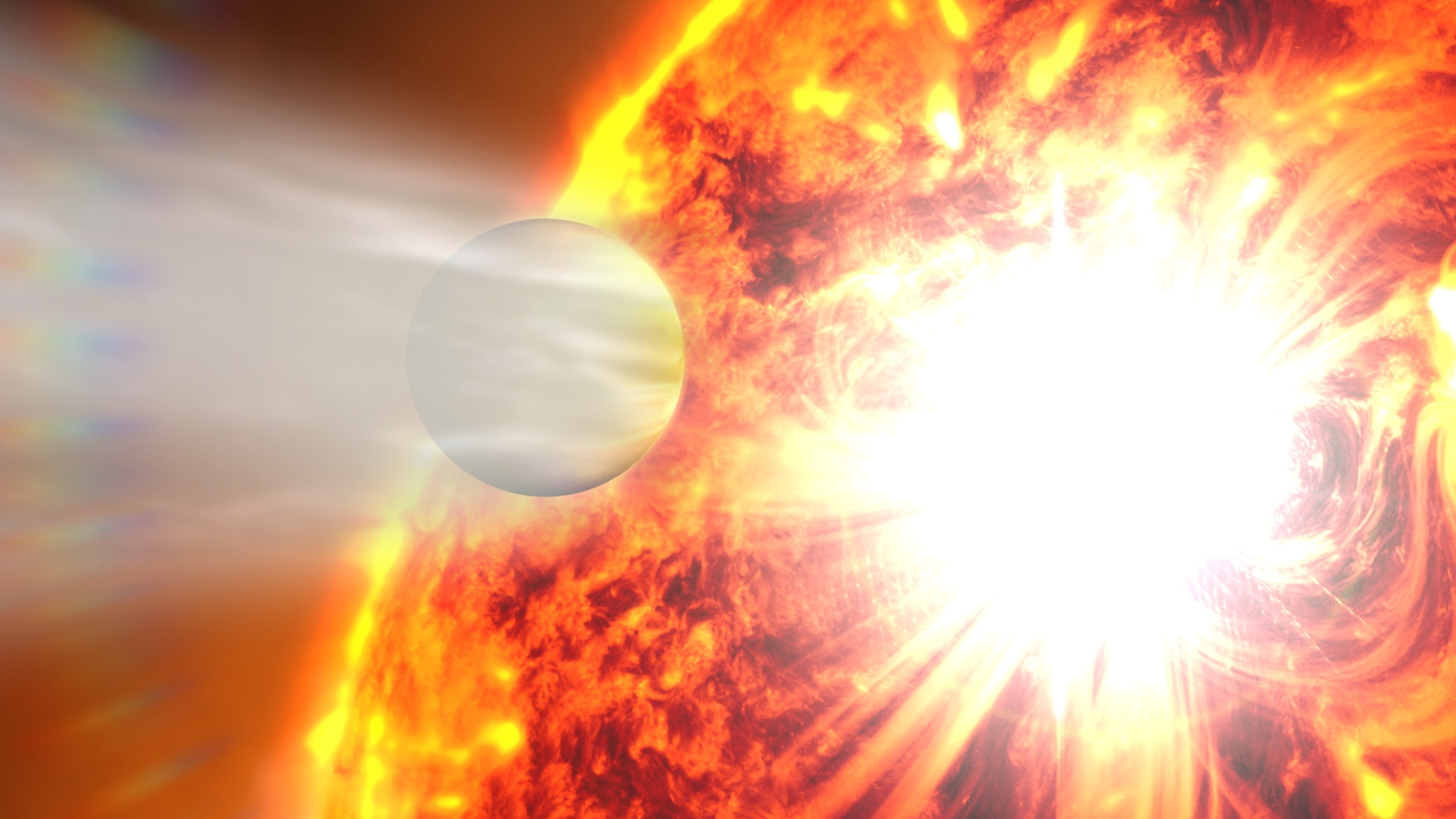HD 189733b Exoplanet Animation
The exoplanet HD 189733b lies so near its star that it completes an orbit every 2.2 days. In late 2011, NASA's Hubble Space Telescope found that the planet's upper atmosphere was streaming away at speeds exceeding 300,000 mph. Just before the Hubble observation, NASA's Swift detected the star blasting out a strong X-ray flare, one powerful enough to blow away part of the planet's atmosphere.
Artist's interpretation of what the exoplanet, flare, and atmosphere loss might have looked like.

Second still from animation
For More Information
Credits
Please give credit for this item to:
NASA/Goddard Space Flight Center/Conceptual Image Lab
-
Animator
- Michael Lentz (USRA)
-
Producer
- Scott Wiessinger (USRA)
-
Writer
- Francis Reddy (Syneren Technologies)
Release date
This page was originally published on Thursday, June 28, 2012.
This page was last updated on Thursday, November 2, 2023 at 10:08 AM EDT.
Missions
This visualization is related to the following missions:Series
This visualization can be found in the following series:Tapes
This visualization originally appeared on the following tapes:-
Evaporating Exoplanet
(ID: 2012067)
Thursday, June 28, 2012 at 4:00AM
Produced by - Robert Crippen (NASA)


